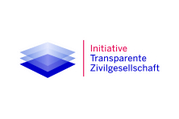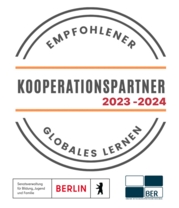Between poverty reduction and macroeconomic stability
13.11.2003: PRS - Structural adjustment under a new name?
Between poverty reduction and macroeconomic stability PRS - Structural adjustment under a new name?
By Ann Kathrin Schneider
PRS processes get their legitimacy from the fact that they promise increased social spending. The money needed to finance it, however, is by no means assured. On the contrary, countries are urged, as in the past, to stabilise their public-sector budgets. Which just goes to show - says Ann Kathrin Schneider - that PRSPs are a mere extension of the structural adjustment programmes they were supposed to supersede.
The initiative launched by the international financial institutions in 1999 is no longer in its infancy. Already, nearly 80 low-income countries have responded to the calls of the World Bank and IMF and presented national poverty reduction strategy papers (PRSPs). PRSP is no longer a theoretical concept; it is a real policy tool.
Most civil society groups involved in PRSP processes on the ground, however, are critical of both the process and the product. Not enough opportunities for participation, too few civil society proposals incorporated into the final version of strategy papers, and the dominance of IMF and World Bank in PRSP development are the criticisms that are most frequently heard. Numerous representatives of civil society see PRSPs as just an attempt by the financial institutions to place formal responsibility for structural adjustment on the shoulders of developing countries without relinquishing control over the preparation of national development concepts.
Even the World Bank and IMF themselves have conducted reviews of PRSP processes. Moreover, in the months ahead, the IMF's new Independent Evaluation Office will be looking at the PRS initiative and checking especially the extent to which new IMF loans relate, as promised, to national PRSPs1.
Macroeconomic management vs. poverty reduction
Studies by both civil society groups and public institutions conclude that the majority of strategy papers contain exaggerated expectations of economic growth and future development aid requirements. Without identifying the dynamos of the anticipated growth, all strategies presume growth rates between five and seven percent. Although the PRSPs offer no explanation of how the extra income will be generated, the assumptions are taken as a basis for a policy of increased expenditure. This, however, flies in the face of the international financial institutions' insistence on strictly defined macroeconomic targets: single-figure inflation rates, low budget deficits and high currency reserves.
A conflict of objectives is thus apparent between the attainment of macroeconomic stability on the one hand and poverty reduction on the other. It is a characteristic of all PRSPs. They propagate an increase in social spending, yet continue to assert that macroeconomic stability is their overriding objective: high currency reserves, low inflation rates, a low public deficit. The fact that this objective ranks higher than poverty-oriented economic management draws caustic comment from civil society spokespersons. They see it as symbolising the failure of the PRSP concept, which was supposed to put the two goals on a coherent footing.
This failure is attributed to the fact that the IMF shows no sign of willingness to open up its 'sovereign territory', macroeconomics, to civil society participation - much less abandon its strict definitions. In the past, this refusal was not institutionalised; it became manifest as countries produced PRSPs. Since spring this year, however, there has been an acute danger of the IMF using the shortcomings of individual PRSPs to legitimise resolving the conflict of objectives between economic stability and poverty reduction as it sees fit.
In a document2 published in April 2003, the Fund criticised a number of completed PRSPs for making unrealistically high growth and development aid forecasts and called on countries in future to produce two different economic concepts: a medium-term one, combining realistic growth forecasts with an effective economic policy, and a long-term one incorporating the more ambitious poverty reduction targets. This proposal could result in countries in future developing a participatively constructed 'show' PRSP geared to fighting poverty and attaining the Millennium goals and incorporating the funding needed to do so, and alongside it a 'realistic' PRSP aimed at achieving economic stability. It is feared that the former will then be dismissed by creditors as unrealistic and the latter - with few levers for reducing poverty - will be taken as the basis for cooperation.
Participation: civil society, parliamentary bodies or who?
Even if that fear proves unfounded, it is now patently obvious that the political space created by the PRSP process is not being used to develop country-specific programmes which are real alternatives to the structural adjustment programmes of the past. PRSPs merely take more account of social needs; they do not constitute a radical break with the Washington Consensus. That is certainly due to the dominance of the representatives of the international financial institutions - but also to the fact that the newly created political space does not seem suitable for supporting democratic processes.
In nearly all PRSP processes, for example, national parliaments are sidelined; except in a few rare instances, poverty strategy papers are neither debated nor approved by parliaments. Representative democratic structures are side-stepped while influential, non-legitimised groups (such as international or national lobbies) are not (or cannot be) prevented from dominating PRSP processes. Meanwhile, groups (e.g. NGOs) which are excluded from the processes have no chance to sue for the right to participate because there is no such legal entitlement. Among other things, this has led to the newly created political space being used not so much by local groups but by representatives of foreign non-governmental organisations. These thus usurp the position of domestic civil actors with very limited scope for influence in the first place and at the same time suppress even the poorer parts of the population they claim to represent.
Increased social spending
Outwardly, however, the fact that participation in the PRS process is required and traditional social sectors figure prominently in the PRSP rhetoric seems to legitimise the policy of the IMF and world Bank. Most strategy papers favour an increase in public spending on basic medical provision and elementary education. Tanzania's PRSP, for example, blames the big cuts in public spending in the 1990s for the country's depressed social indicators today. So any poverty reduction strategy, its authors conclude, needs to increase the scale and efficiency of social expenditure. The focus in that paper is primarily on basic medical provision, elementary education, water supply and the development and maintenance of the rural road network3. Although the PRSP sets out details of the planned increases in spending, it does not paint a very clear picture of what will be promoted in the various sectors and how much assistance will be given. In some cases, strategy is defined by no more than general statements of intent. As with other countries' PRSPs, however, insufficient prioritisation is not the only weakness here; another is lack of clarity about financing for the measures that are proposed.
At the same time, the macroeconomic reforms set out in the PRSP are very much in the tradition of the structural adjustment programmes of the IMF and World Bank. Objectives include cutting inflation to below 4%, keeping the public deficit low and increasing currency reserves. In view of the excessive expectations of growth and adherence to strict macroeconomic goals, it is not clear how or whether the programmes planned for health, education and water can still be realised. In Tanzania's PRSP, there is mention of resorting to consumer charging - which fuels more than a suspicion that the country in future will continue to have an inadequate state system of basic social services.
Poverty-reducing growth?
Much more woolly are the descriptions of how incomes and employment for the poor are to be improved. The majority of PRSPs completed so far cite no specific programmes designed to help the poor participate in growth processes and free them from dependence on charity. The few details that can be gleaned about how spending will be spread give the impression that not much funding is earmarked for boosting the incomes of the poor.
In Uganda, for example, poverty-related expenditure has steadily increased in recent years, but most of the extra spending has had a traditional social-sector focus. 62% of Ugandan Poverty Action Fund injections in 2000 went into health, education, water and waste water management. Just over ten percent of the Fund money was spent on heightening the productivity of the country's poor.3 What also seems questionable is how the income situation of the poor can be improved by a strategy for growth which relies largely on foreign direct investment in modern sectors of the economy. Many PRSPs cite plans to develop mining and other economically dynamic sectors, where little employment is likely to be generated.
Uganda's PRSP points out that one obstacle to increasing the productivity of low-income groups is lack of access to loans. Surprisingly, however, provision of microcredits is not a central element of the strategy proposed. Instead, priority is given to the development of agriculture, the sector in which 90% of Uganda's poor scrape a living. The plan is to get more of the poor rural population into commercial farming, especially into farming for export.3 Accordingly, money should be invested in roadbuilding and in agricultural advice and research. But as the Ugandan PRSP contains a 37% funding gap, it is anybody's guess how the planned measures are to be financed.
It is also unclear where the first economies will be made. From statements contained in the PRSP and others made by the government after the PRSP was approved, however, it is to be feared that Uganda, like Tanzania, plans to rely heavily on consumer charging. In which case it will be the people, not the state, that pay a portion of the costs. And one of the reasons for this is the IMF's insistence on strict macroeconomic targets. Contrary to its statements of intent, the IMF has not relaxed its macroeconomic requirements. So it is not possible for the Ugandan government to spend any more development aid money on poverty reduction; it is obliged to deposit the money in central bank accounts as currency reserves or to use it for making debt repayments. An IMF/World Bank assessment shows clearly that, despite the evident funding gap, IMF and World Bank are not prepared to be more flexible about the magnitude of Uganda's budget deficit.
Conclusion and outlook
The PRSP process is in crisis. In many cases, the planned increase in spending on social-sector services and employment or empowerment programmes for the poor will not be realised because the ways and means of financing them have not been defined. IMF and World Bank remain adamant in their refusal to finance the reforms by raising the ceiling for budget deficits. The money released by debt reduction is far too little and cannot secure the financing of the strategies. So far, there has been no word from donors that they are willing to stump up funds to enable countries to implement their PRSP plans.
The IMF's call for countries in future to prepare two different PRSPs - one based on strict macroeconomic criteria and one geared to reducing poverty - could cement the subordination of poverty reduction to the goal of macroeconomic stability and, in that sense, mark a return to the days of structural adjustment programmes and Washington Consensus. If that were to happen, the financial institutions' promises to make poverty reduction their primary policy objective would be revealed as mere lip service. It remains to be hoped, however, that critics inside and outside the institutions can stop this development and enable the long-promised relaxation of IMF and World Bank credit conditions to be realised.
Ann Kathrin Schneider is a WEED project adviser specialising in issues relating to international financial institutions and debt. < ak.schneider@weed-online.org >
1) www.imf.org/external/np/ieo/2001/eng/wp101901.htm#4
2) IMF (2003): Aligning the Poverty Reduction and Growth Facility and the Poverty Reduction Strategy Paper Approach. Issues and Options
3) Walther, Miriam (2002): Armutsstrategiepapiere (PRSP): Neuanfang in der Strukturanpassungspolitik von IWF und Weltbank? (Poverty reduction strategy papers. A fresh start in the structural adjustment policy of IMF and World Bank?) WEED










 09.01.2024 | Digitales Multiplikator*innen Seminar zum Thema Sport, globale Lieferketten und Fairer Handel am 18.01.25 // 10-12 Uhr
09.01.2024 | Digitales Multiplikator*innen Seminar zum Thema Sport, globale Lieferketten und Fairer Handel am 18.01.25 // 10-12 Uhr